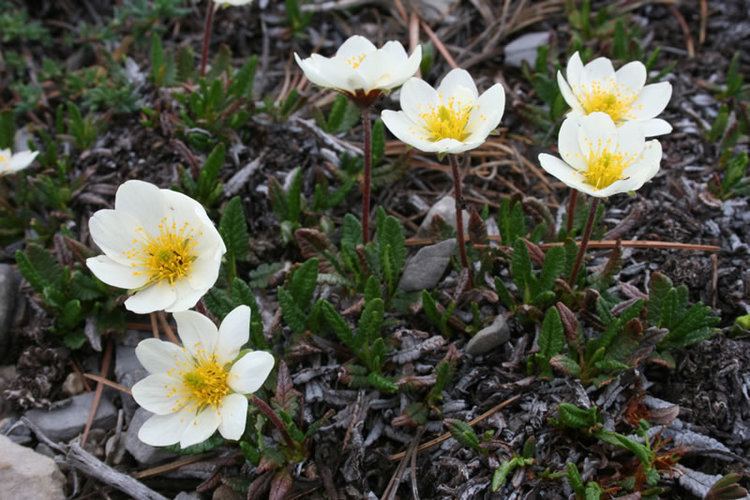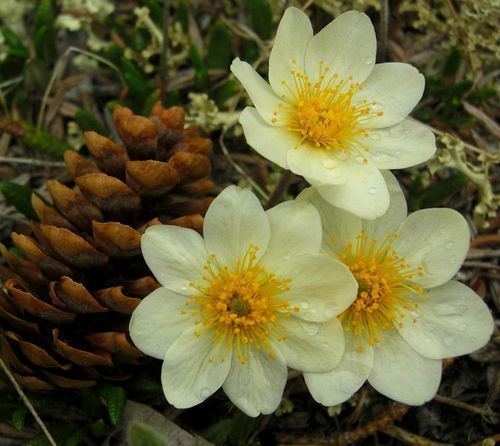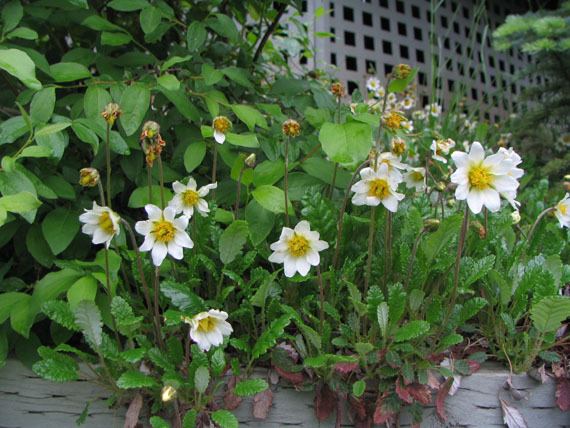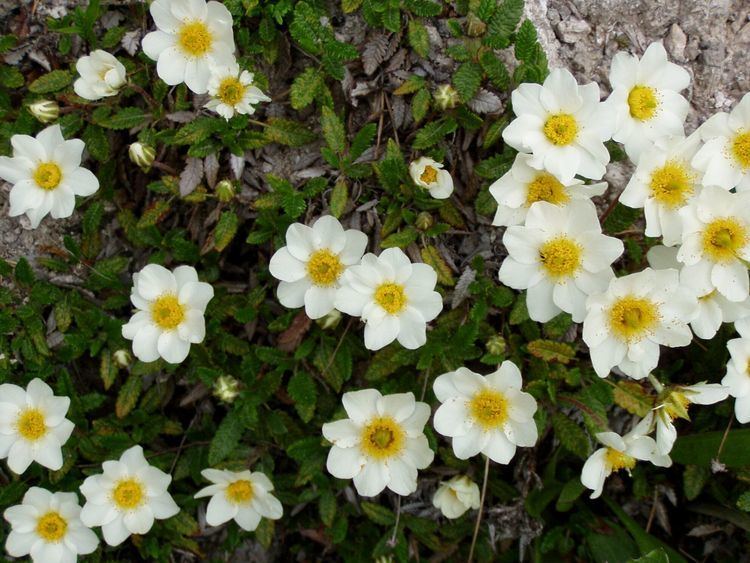Scientific name Dryas Rank Genus | ||
 | ||
Lower classifications | ||
Dryas is a genus of perennial cushion-forming evergreen dwarf shrubs in the family Rosaceae, native to the arctic and alpine regions of Europe, Asia and North America. The genus is named after the Greek nymph Dryad. The classification of Dryas within the Rosaceae has been unclear. The genus was formerly placed in the subfamily Rosoideae, but is now placed in subfamily Dryadoideae.
Contents

The species are superficially similar to Geum, Potentilla and Fragaria, but are distinct in having flowers with eight petals (rarely seven or up to ten), instead of the five petals found in most other genera in the Rosaceae. The flowers are erect and white with a yellow centre (Dryas integrifolia, Dryas octopetala) or pendulous and all-yellow (Dryas drummondii), and held conspicuously above the small plants. The hybrid has pale yellow flowers. This makes them very popular in rockeries and alpine gardens.

Dryas tolerates a wide variety of unshaded habitats, including alpine situations with sand or gravel substrate, similar substrates in flat tundra lowlands, and also fen habitats upon organic substrate where some shading from adjacent sedges or shrubs may occur.

Dryas is the clan badge of Clan MacNeil of Scotland.
The Younger Dryas and Older Dryas stadials are geological periods of cold temperature that are named after Dryas octopetala, which flourished during that time and is used as a fossil indicator of those periods.

Species
Dryas comprises three species, but the genus is in need of taxonomic revision:

Hybrids
Two hybrids have been described:
Nitrogen Fixation
Some Dryas plants have root nodules that host the nitrogen-fixing bacterium Frankia.
